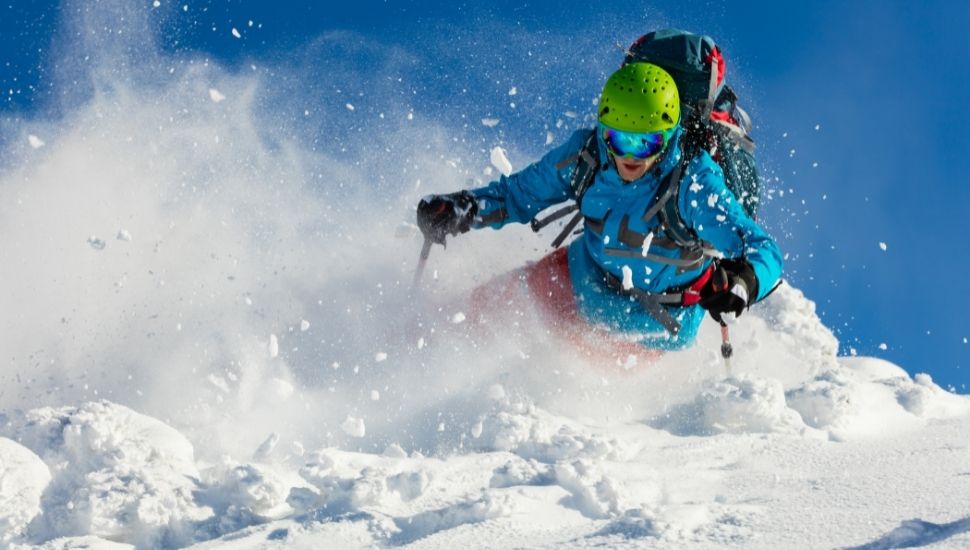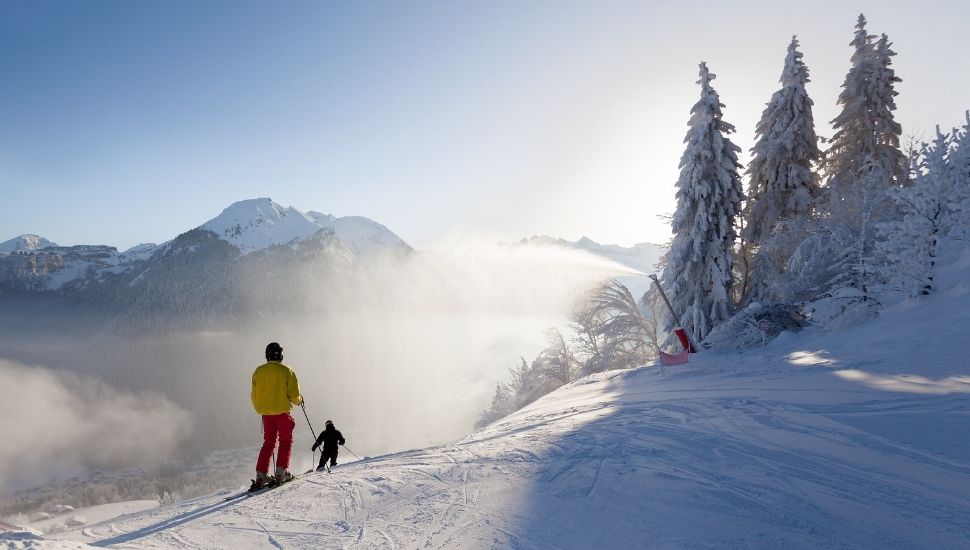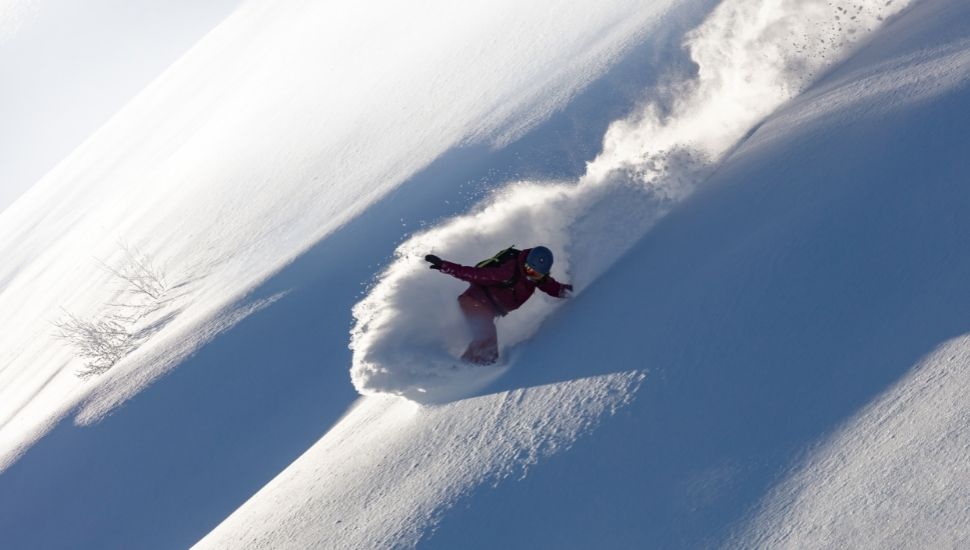Can I Ski Off-Piste?
In general, “off-piste” skiing is when you ski outside a ski resort's marked pistes.
Because there are no marked runs or slopes, off-piste skiing may be more challenging and risky due to obstacles covered in snow - eg. rocks and tree stumps, as well as the possibility of avalanches and getting stuck in deep snow.
Why do people ski off-piste?
People go off-piste skiing because it allows them to enjoy the beauty of the outdoors without the commercialisation associated with ski resorts.
It is also more challenging and there are fewer people around.

Off-piste ski insurance: Can I take it out?
Whether or not you are insured for off-piste skiing depends on the specific exclusions of your travel insurance policy.
In most cases, a general travel insurance policy would not cover you for any winter sports activities including off-piste skiing, but you can normally add additional cover for these activities.
A winter sports insurance policy will often provide off-piste ski insurance cover.
Does Start Travel cover off-piste skiing?
Start Travel can cover you for off-piste skiing within the ski resort boundaries. There is an additional premium to pay. Simply call us on 0333 320 1240 so we can arrange the right cover for you.
Off-piste meaning
Note that the exact meaning of “off-piste'' skiing can vary. However, the Start Travel Policy Wording describes off-piste skiing as “any area outside of a designated and prepared marked piste, trail or run. This includes unmarked areas between runs which are inside the resort boundary and areas located outside of the resort boundaries in the backcountry.''
Why does it cost more to cover off-piste skiing?
Off-piste skiing is more risky than on-piste skiing.
On-piste skiers have the benefit of using slopes that are regularly maintained by snow ploughs and snow cannons. They are also clearly marked so it's easy to stay on-piste. Crash mats may also be tied to trees to minimise injury in the event of a collision, and safety nets may be erected to stop skiers falling off cliffs/precipices.
But with off-piste skiing, there are none of these safety features, so a skier may collide with a snow-covered obstacle, get stuck in a snow drift, or hit a concealed patch of ice.
Insurers require you to take out additional protection for the associated risks to ski off-piste, to cover things like emergency evacuation and medical care.

Do I really need additional cover for off-piste skiing?
Without appropriate cover, you could face large medical bills if you're injured while skiing, whether on-piste or off-piste.
According to Nikki White, the Association of British Travel Insurers’ director of destinations and sustainability, “Nearly a third of winter sports holidaymakers are heading out to the slopes without the appropriate travel insurance in place, putting themselves at risk of costly medical bills if they have an accident while abroad."
How to stay safe while off-piste skiing
If you’re wondering, can I ski off-piste safely? There are steps you can take to help reduce the risks.
As well as taking out appropriate travel insurance that covers you for going off-piste, you can minimise the chances of getting injured by:
- Wearing a helmet
- Ensuring equipment fits correctly
- Checking safety advice at your resort - eg as regards avalanche risk
- Never ski alone - in case you need someone to get help
Off-piste skiing for beginners
If you’ve never skied off-piste before, you should learn as much as possible about the practice before you try it.
Some things to remember with off-piste skiing are:
- Never ski alone
- Tell others about where you plan to ski
- Carry an avalanche beacon and shovel (to dig yourself out of snow)
- Carry food and water
- Maintain speed to prevent sinking into the snow
- Review snow conditions before you go
- Keep weight balanced across both skis
- Steer with body weight rather than edges (which have nothing substantial to cut into on powdery snow)
Can I ski off-piste? - How to ski off-piste and powder
Note that when it comes to how to ski off-piste and on powder, there are some similarities - particularly maintaining a good speed, keeping weight balanced across both skis, and steering with your body weight.
Getting fit for skiing
It's also important to have a good level of fitness before you go skiing - whether on-piste or off-piste. This helps you get more out of your holiday and helps reduce the chances of injury.
Because skiing harnesses muscle groups not often used in everyday life, it’s a good idea to undertake certain exercises in the weeks and months before you head to the piste. Two-scissor kicks, squats, in-and outs and hip rotations can help.
The Ski Club of Great Britain recommends you build up your fitness from six weeks before you go skiing.
More information: Ski Club fitness recommendations

What about insurance for off-piste snowboarding?
Off-piste snowboarding is when you go snowboarding off the marked slopes of a resort.
If you're planning to go off-piste snowboarding, you should ensure your travel insurance covers you.
Similar risks apply to off-piste snowboarding as to off-piste skiing.
Start Travel can cover you for off-piste snowboarding for an additional premium. Just call us on 0333 320 1240 so we can arrange the correct cover for you.
Isn't travel insurance cover for off-piste skiing/snowboarding an unnecessary expense?
Taking a winter sports holiday can be expensive, but trying to save money by not taking out appropriate travel insurance cover could be a false economy due to the large medical bills you might face if you are injured.
For a relatively small additional sum, you'll have the peace of mind that you're protected should you get hurt.
ABTA members reported more than 200 significant injuries among UK holiday makers in the 2018/19 ski season, which related to snowboarding, bum boarding and tobogganing, as well as to skiing.
According to ABTA research (from 2019), the 25 to 34 age group has more first-hand experience with winter sports injuries than any other demographic.
12 percent of 25-34 year olds who have undertaken a winter sports holiday have travelled with someone who has had a winter sports injury.
The ABTA research also revealed that 45-54 year olds were most likely to take out holiday cover (51 per cent) - a considerably higher proportion than 18-24 year olds (28 per cent likely to take out cover).
Learn more about Winter Sports Cover from Start Travel
Get a Quote